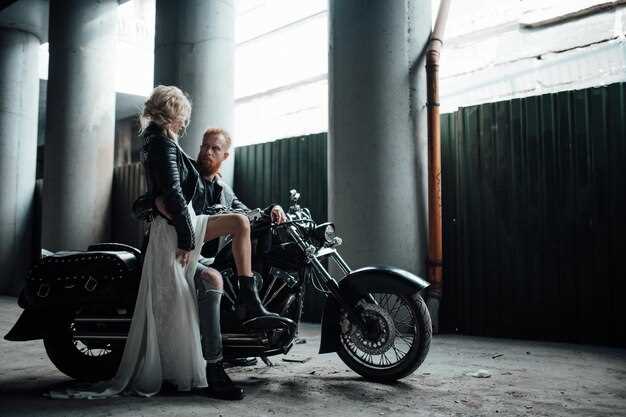
When it comes to motorcycle riding, two prominent categories often come to mind: cruisers and sport bikes. Each class of bike is designed with distinct characteristics that cater to different riding styles and preferences. Cruiser bikes, known for their laid-back riding position, provide a comfortable experience for leisurely rides. These bikes typically feature a lower seat height, wide handlebars, and a powerful torque that makes them ideal for relaxed cruising.
On the other hand, sport bikes are engineered for performance and agility. With their aerodynamic designs and high-revving engines, sport bikes are built for speed and precision handling. Riders can experience exhilarating acceleration and cornering capabilities that make them a thrill to ride on winding roads. Understanding these differences is crucial for riders looking to choose the right motorcycle for their lifestyle.
In this article, we will delve deeper into the features of cruisers and sport bikes, as well as touring models that combine characteristics from both styles. By analyzing aspects such as engine performance, ergonomics, and storage capacity, we aim to provide a comprehensive comparison that will help potential buyers make informed decisions about their next bike.
Ergonomics and Riding Comfort: What to Expect from Cruisers vs. Sport Bikes

When comparing cruisers and sport bikes, one of the most significant factors to consider is ergonomics and riding comfort. Cruisers are designed with a more relaxed riding position, featuring lower seat heights, forward-set footpegs, and wider handlebars. This ergonomic layout allows for a comfortable, upright posture, making long rides more enjoyable. Riders on cruisers often experience less fatigue, as the body is less strained during extended journeys.
In contrast, sport bikes prioritize performance and agility, resulting in a more aggressive riding position. Riders are typically leaned forward with higher footpegs and lower handlebars, which can lead to increased pressure on the wrists and lower back. While this position enhances control and aerodynamics, it may cause discomfort during long rides. Riders may find themselves shifting positions frequently to alleviate strain, especially on longer trips.
Furthermore, cruisers often come equipped with larger, more supportive seats that provide extra cushioning, enhancing overall comfort on longer outings. Sport bikes, on the other hand, tend to have firmer, more minimalistic seats designed for performance rather than comfort. This difference can significantly impact the overall riding experience, as riders on sport bikes might struggle with discomfort during extended periods of riding.
Overall, if comfort and relaxed cruising are your priorities, a cruiser bike would likely meet your needs better. Meanwhile, for those who prioritize speed and handling, a sport bike might be worth the trade-off in ergonomics. Understanding these distinctions will help riders make informed choices based on their personal preferences and riding styles.
Performance Metrics: Acceleration, Speed, and Handling in Touring vs. Sport Bikes

When comparing cruisers and sport bikes, performance metrics such as acceleration, speed, and handling are critical factors that differentiate these two motorcycle categories.
Acceleration is one of the most noticeable aspects where sport bikes excel. With their lightweight design and high-powered engines, sport bikes often reach 0 to 60 mph in a matter of seconds. This rapid acceleration is attributed to their engineered focus on performance, utilizing advanced technology and materials to minimize weight. In contrast, cruisers typically have larger, heavier frames that prioritize comfort and stability over raw acceleration. This configuration often results in slower off-the-line performance, favoring a more leisurely cruising pace.
Speed is another key metric where sport bikes shine. Designed for high-speed performance and agility, sport bikes can achieve top speeds significantly higher than most cruisers. The aerodynamic design of sport bikes reduces drag, allowing them to slice through the air more efficiently. Cruisers, however, are built for comfort on long rides rather than outright speed, often featuring larger engines that provide torque for relaxed highway cruising rather than high-end velocity.
Handling is where the differences become even more pronounced. Sport bikes are engineered for agility and precision, with a low center of gravity and responsive suspension systems that allow for sharp turns and quick maneuvers. Their lightweight construction enhances this capability, making them ideal for riders who enjoy carving through twisty roads at speed. Cruisers prioritize comfort and ease of ride, often outfitted with extended wheelbases, which can result in a more stable but less nimble riding experience. While cruisers can handle curves adequately, they do not offer the same level of responsiveness as sport bikes, making them less suited for aggressive riding styles.
In summary, the comparison of cruisers and sport bikes reveals distinct performance metrics across acceleration, speed, and handling. Sport bikes cater to riders seeking high-performance and agility, whereas cruisers provide a more relaxed and comfortable riding experience. Each type of motorcycle has its strengths, making the choice between them a matter of personal preference and intended use.
Storage Solutions and Customization Options for Cruisers and Sport Bikes
When it comes to choosing between cruisers and sport bikes, a significant aspect to consider is their storage solutions and customization options. Each category of motorcycles presents unique features that cater to different riding styles and preferences.
Storage Solutions
Storage capacity can greatly influence the practicality of a motorcycle. Below is a comparison of storage solutions for cruisers and sport bikes:
- Cruisers:
- Typically designed with built-in saddlebags, which offer ample room for personal items and riding gear.
- Some models feature larger rear seats that can accommodate luggage or additional storage units.
- Options for aftermarket storage accessories, such as tank bags and cargo racks, provide enhanced convenience for long rides.
- Sport Bikes:
- Usually prioritize aerodynamics over storage, resulting in limited built-in options.
- Riders can access aftermarket tail bags and tank bags, but these may not integrate as seamlessly as cruiser options.
- Despite less storage, sport bikes often have adaptable features like quick-release mechanisms for easier gear management.
Customization Options
Customization is another key area where cruisers and sport bikes diverge. Here’s how they compare:
- Cruisers:
- Customization is often focused on aesthetics, with vast options for paint jobs, chrome finishes, and seat modifications.
- Riders can alter handlebars, exhaust systems, and footpegs to enhance comfort and style.
- Many cruisers support extensive aftermarket parts, allowing for personalized enhancements that reflect individual taste.
- Sport Bikes:
- Customization tends to center around performance improvements, such as upgraded suspension, tires, and braking systems.
- Riders frequently modify electronic settings and add performance-enhancing gadgets.
- The aerodynamic bodywork of sport bikes can also be customized, but this often involves more technical modifications.
In summary, while both cruisers and sport bikes offer storage solutions and customization options, they do so in ways that cater to their respective audiences. Cruisers tend to focus on practicality and personalization through comfort and aesthetics, whereas sport bikes emphasize performance and technical modifications.




